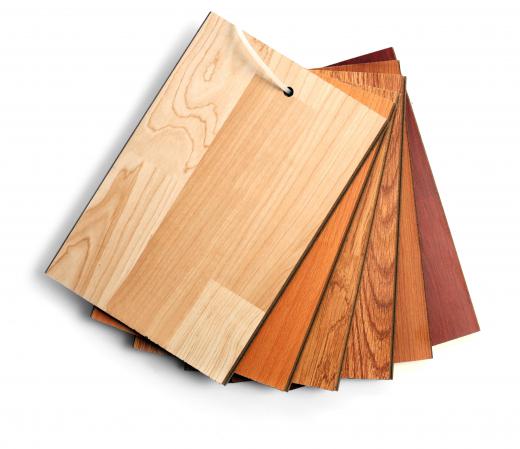Laminate flooring is a popular choice among home and business owners, as it is considered relatively cheap and easy to install compared with other flooring options. There are many different color and design options with laminate floors: they can mimic ceramic tile, hardwood planks, or rustic stones at a much lower price than the actual materials. Whether a floor is installed by a professional or an ambitious homeowner, several different laminate flooring tools are needed to ensure a proper, attractive finished design. Many laminate flooring tools are common construction instruments, such as sanders, screwdrivers, and levels. Some tools, however, are specifically designed for the installation and maintenance of laminate floors, including spacers, tapping blocks, and cutters.
It is essential to create a level, smooth surface before laying down laminate planks or tiles. If another type of floor is being replaced, an individual may need a screwdriver and pry bar to remove material and expose the sub-floor. An installer should ensure the sub-floor is even by reading a level in each corner, along the base of walls, and several places in the middle of an area. The sub-floor can usually be smoothed and leveled using a power belt sander. Once an area has been cleaned and leveled, an installer can take careful measurements and calculate the square footage of laminate flooring he or she will need.

Most laminate floors can be attached to sub-floors with locking plastic joints. Securing the base of the joints to the sub-floor may require small amounts of adhesive or glue. Spacers are generally placed near corners and walls in case the flooring material expands due to aging or weatherization. Once spacers and base joints are in place, an installer can begin snapping down planks or tiles of laminate. A tapping block can be used to make sure that joints snap together securely and evenly. Many professionals utilize specialized clamps and similar laminate flooring tools to make sure that installed pieces stay in place while the rest of the floor is being set.

It is likely that an installer will need to use cutting and shaping laminate flooring tools to make pieces align with walls or wrap-around fixtures. A laminate cutter is a shearing device that looks similar to a heavy-duty paper cutter. It has a smooth surface to secure and measure laminate, and a long blade with a handle that can be lowered to cut pieces to length. A miter box may also be needed to ensure that angles and corners are cut exactly to size. By following installation instructions and properly utilizing laminate flooring tools, a person may be able to complete an entire project in just a few hours.
